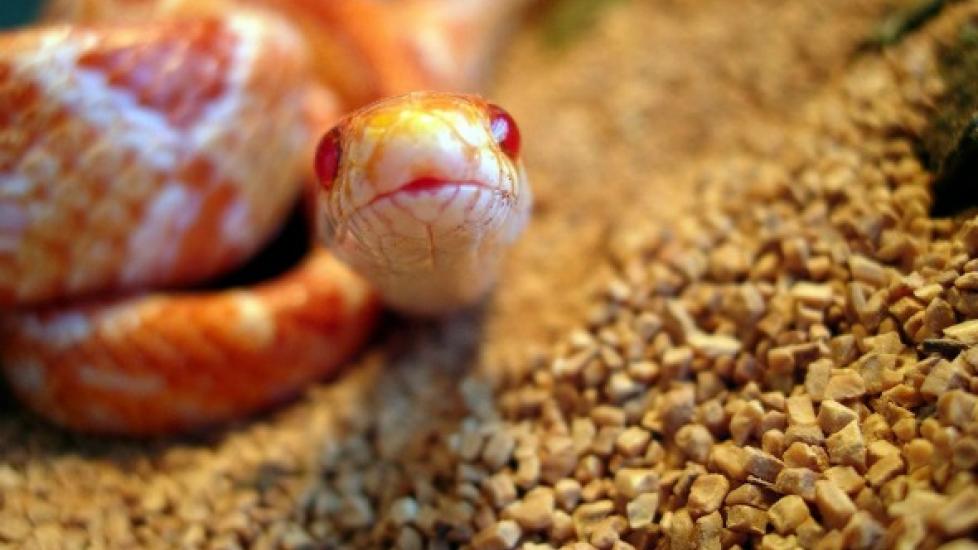Pet Snake Guide for Beginners
Snake Bytes: Tips on Getting Your First Snake
So you’ve decided you want a pet snake. Great! They make fantastic pets. But before you rush off to get one, sit down and have a bit of a read first.
#1 Choose a Good Beginner Snake.
You might think any old snake will do, but you would be wrong. Many experts would recommend the corn snake, ball python, and kingsnake as good pet snakes.
#2 Know the Commitment.
Just how long do snakes live? It depends on the species, but most snakes tend to live long lives. For example, corn snakes have a lifespan of 5-10 years, ball pythons can live for 20-30 years, and kingsnakes often live for 12-15 years. Make sure you do your research on the type of snake you want beforehand to determine if you're ready for the time commitment that comes with it.
#3 Know the Risks.
We’re not just talking bites here (though the risk is small, accidents can happen). Snakes, like all reptiles, can carry Salmonella, which can leave you feeling quite ill (it’s not a good idea to have a snake with kids under five because of this). If you have children in the house, make sure they learn to wash their hands after handling the snake. And you? Wash your hands, too!
#4 Understand What Snakes Like.
Snakes are, by nature, typically solitary creatures. They most definitely do not enjoy crowds or loud noises, so you can just forget about taking them to see the latest Taylor Swift concert. And because of this solitary nature, it’s usually best to have just one snake per habitat. Try to keep the snake handling to a minimum, as most snakes aren't the touchy-feely type. However, you do need to handle your snake for about five minutes a day so it is accustomed to human contact. They also love consistency and routine (who knew?), so stick to the same routine for feeding, changing of water, and cleaning the tank.
#5 The Right Environment is Key.
Now this doesn't mean you have to grab some dirt, water, and flora from the tropical rainforests of South America, but you do need to create the right environment for your pet snake to live and thrive in. This means maintaining the temperature and humidity at the proper levels. Check out reputable resources, such as PetSmart’s Care Guides, to see the correct temperature and humidity ranges for your pet.
Once you know your pet’s requirements fit the terrarium with two thermometers and a hygrometer (humidity gauge) to ensure your pet is in the ideal environment. A heat lamp is an excellent heat source, but only use this for half the tank, as your snake likes having a cool retreat to hang out in from time to time, too. Heat rocks look nice, but in reality they are not safe for a snake's sensitive skin. An artificial plant (live plants or fertilizers in the soil can be harmful to snakes) placed cleverly inside the habitat, along with an extra water bowl under the lamp, can also help you reach the desired level of humidity. But if you live in a dry environment, you may want to place a humidifier near (not in) the tank or use a reptile fogging system designed to be used inside your snake's habitat.
See Also:
#6 Snakes Like Play Time, Too.
Always up for a game of hide-and-seek (although much better at the hiding part), snakes enjoy burrowing under objects in their environment. A log or a branch to explore and curl around is another great addition for the snake's terrarium. Experiment with different objects to discover what your snake likes and add it to the habitat. Remember, fake is sometimes better than real, as fake is less likely to mold or carry spores.
#7 Dinnertime.
Be prepared. Snakes like to eat real meat. It does not need to be fancy, like a filet mignon, but it should be raw. Mice, or rats for large snakes, are the best for this, and they are easy to acquire at your local pet shop. In fact, some mice are bred especially for this purpose. Most snakes will eat frozen mice (that you’ve very nicely allowed to warm to room temperature), but be aware that some will only chow down on the living variety. Check with your pet store or breeder to see if they feed live or thawed frozen rodents. Your pet will most likely continue to do what they’ve done in the store. So if you do have to feed your snake live rodents, make sure your snake is hungry, and stay vigilant because you may quickly become the prey if you are not careful. Keep in mind that with patience you can get even the most adamant live eater to switch to the convenience and safety of defrosted frozen rodents.
#8 Cleaning.
Snakes are pretty easy to clean up after. Because their diet consists of meat, they do have fecal droppings, but lining the tank with newspaper, or other substrate, will help keep the terrarium tidy. Keep a bowl of clean fresh water at all times, so your snake can have a drink and a bath whenever it wishes.
#9 To Hibernate or Not to Hibernate?
It is natural for snakes to hibernate during the winter, and this is essential if you’re breeding them. If you do decide to let your snake hibernate, it’s best to speak to an expert for advice first. You’ll need to keep it in a cool, dark room. Just please don’t pop your snake away and forget about it. You’ll need to do daily rounds, checking the temperature and the humidity of the enclosure, and keeping the water fresh and clean on a daily basis.
Now that you have some information, you are on your way to having your first pet snake.
Image: elan / via Shutterstock
